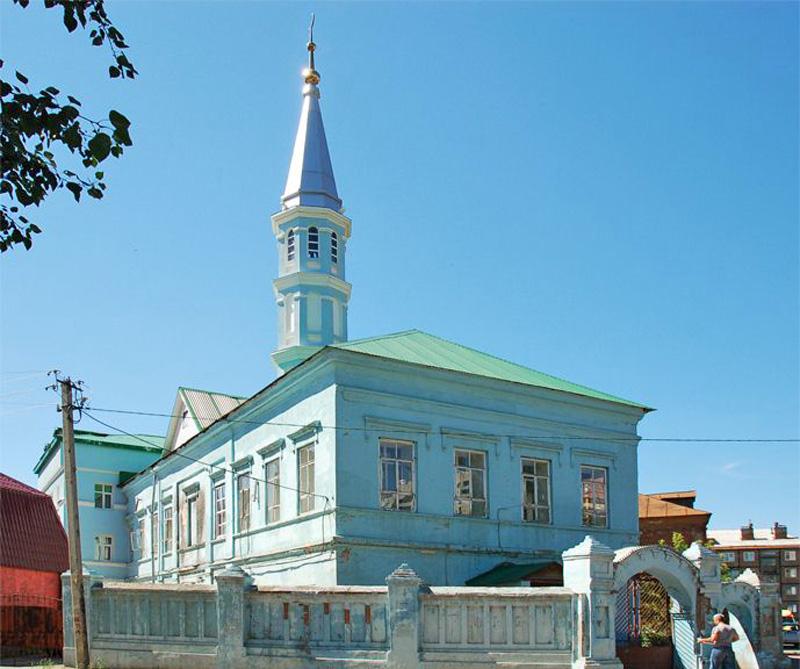Fourth Cathedral — Blue Mosque

Blue Mosque (Fourth Cathedral, in Tatar “Zangar mashchet”) is a monument of Tatar temple architecture located in the Old Tatar Settlement. It was given its name by the color of the walls.
The history of the Blue Mosque has a long and unusual background. It starts from the very moment of its construction—in particular, back in 1778, when a wooden mosque originally appeared on this site. At that time it was the fourth city one, so the fourth mahalla was formed, which means a neighborhood where predominantly Muslim people lived.
In 1815, the old wooden mosque was moved to the village of Suyksu; they started building a brick one, funded by the merchant Akhmet Iskhakovich Aitov-Zamanov, who spared no expense, even though he himself lived in the mahalla of the First Cathedral Mosque.
In 1864, a merchant G. B. Mustakimov donated his plot of land, expanded the mosque by three windows along the facade, and built a fence around it according to the design of architect P. I. Romanov. . In 1907, a merchant G. A. Ishmuratov enlarged the mihrab part of the building and also broadened the pantry of the mosque.
The mahalla of the mosque was quite populous. In 1916, there were 792 men and 814 women, and 82 landlords.
In 1815, they started building a substantial stone mosque in the place of the wooden mosque. All the finances for the construction work were undertaken by wealthy merchants. In the 1930s, the Zangar Mosque (the Blue Mosque) was closed and converted for economic purposes, like many other religious sites. The original function of the mosque was restored in 1993. Services were resumed here, and the minaret was rebuilt in 2009.
Other publications
All publicationsSeptember 12
Merchant in the first guild, benefactor Suleiman Mukhametzyanovich Aitov
In 1898, he built the second cathedral mosque in the Admiral Settlement of the city of Kazan.

October 20
Galeyev Mosque – «The Fifth Cathedral»
A monument of Tatar religious architecture of the late 18th-19th centuries. One of the largest mosques of pre-revolutionary Kazan, preserving the stylistic features of classicist architecture.

